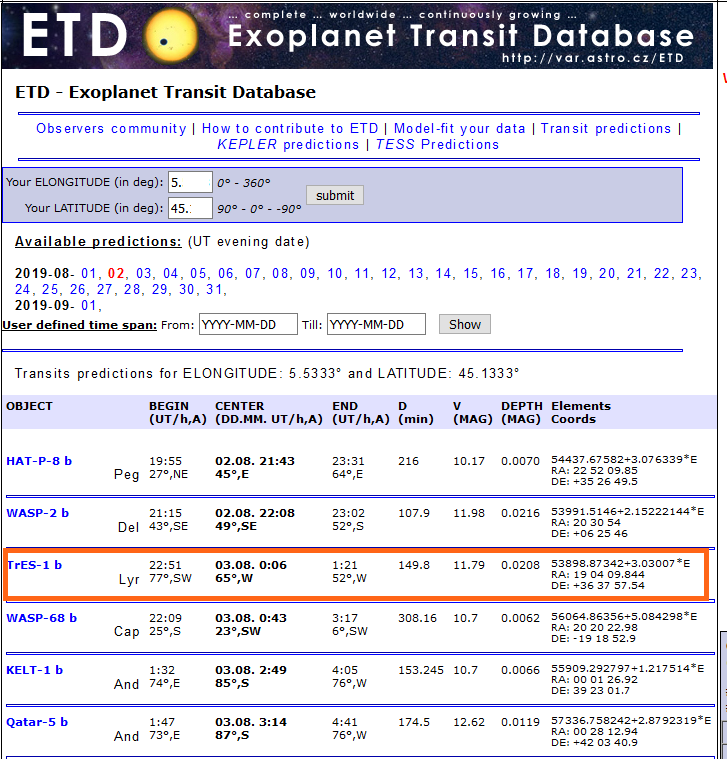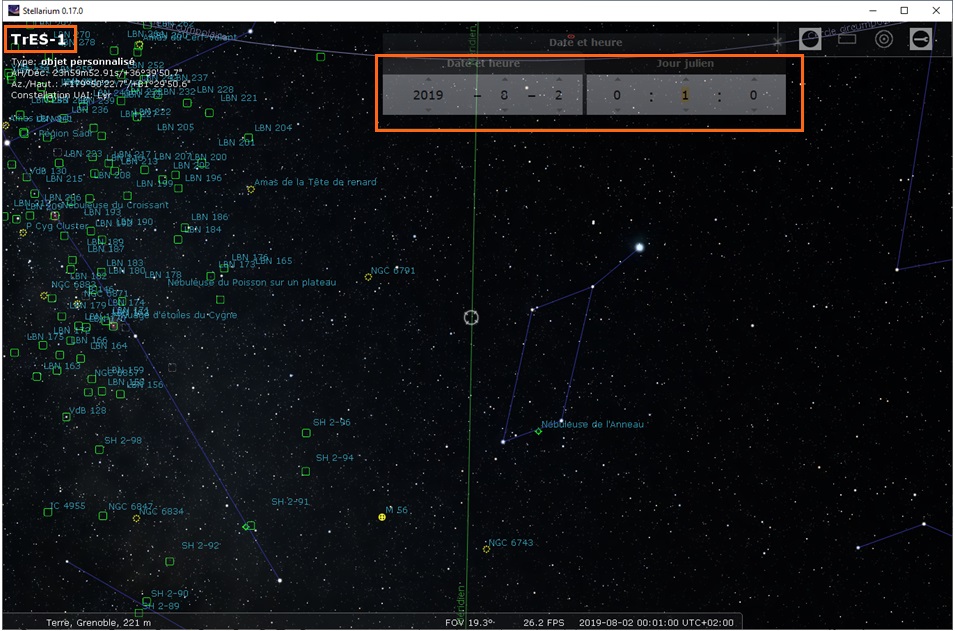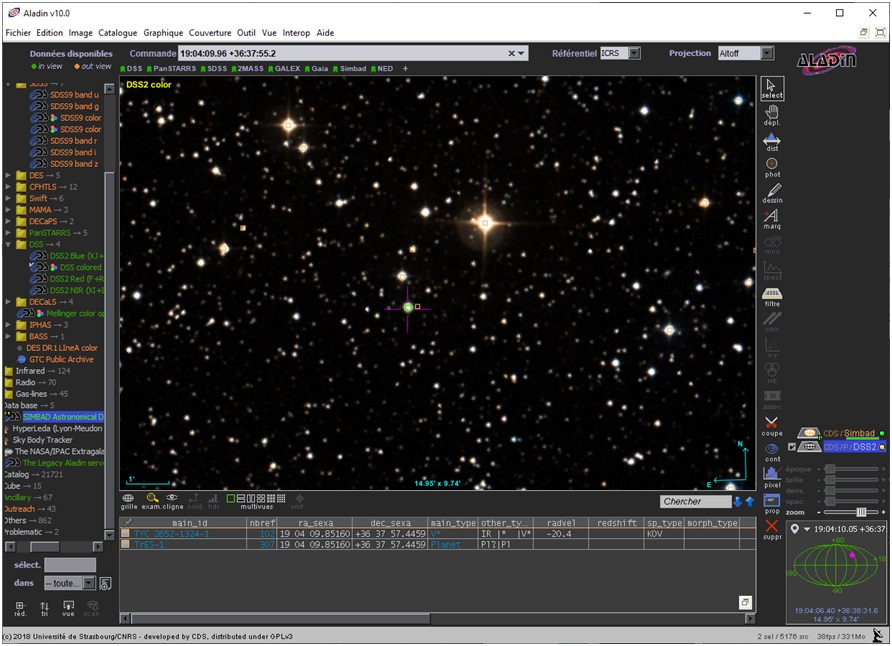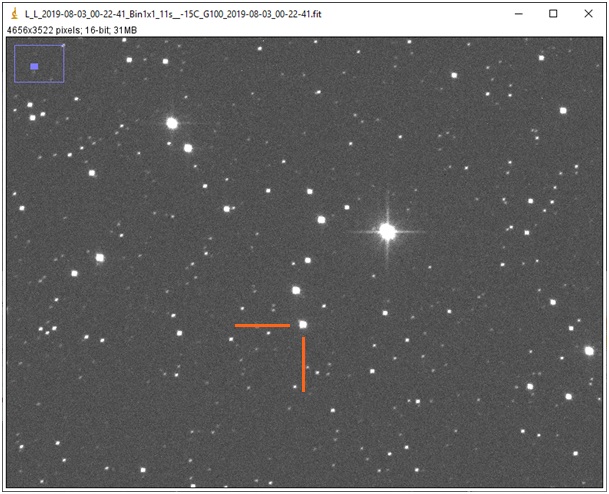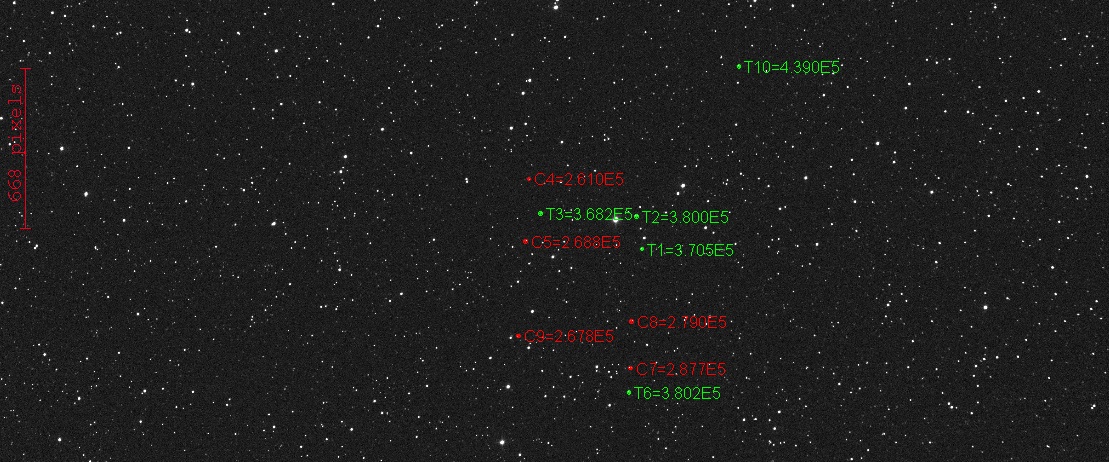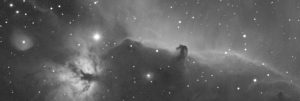2h42 exposure (Astronomik L2: 764x11s)
Acquired on the 2nd of August 2019
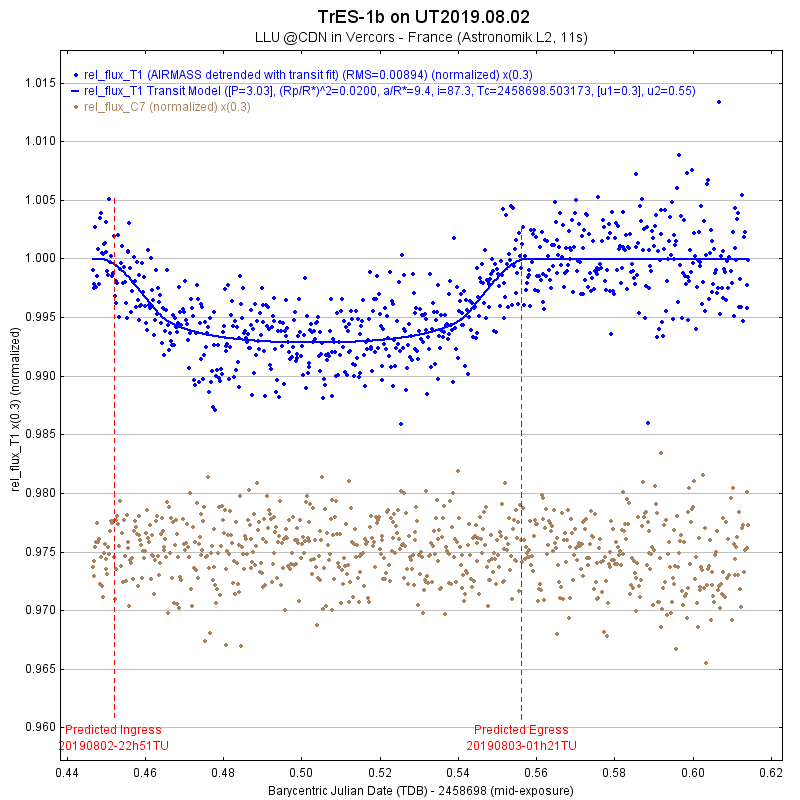
Setup: TS ONTC 200/800, 2″ Feathertouch, AZ-EQ6, QHY163m gain=100, OAG-M, QHYCFW2-M, AstroLink 4 mini. Software: APT, Stellarium scope, EQ MOD, PHD2, AstroImageJ
After a 1st attempt on TrES2-b, here is TrES1-b transit with the aim to capture all the transit and obtain more accurate data!
References
This imaging session is greatly inspired of the methods and recommendations provided by M.Conti and B. Gary in the following documents. Many thanks to them!
“A Practical Guide to Exoplanet Observing” – Dennis M. Conti. Website: https://astrodennis.com/.
“Exoplanet observing for amateurs: second edition” – B. Gary. Website: http://brucegary.net/.
Which target?
For this night, ETD website provides the following predictions of transits:
TrES-1 is the most convenient target:
- Transit starts at 0:51 local time and end at 03:21
- Star reaches meridian 50mn before transit ingress, so no meridian to manage
Locate the star
TrES-1 is magnitude 11.79 in a crowded star field in Lyra constellation. After a go-to, I used Aladin desktop to locate the star and center it on the image. This last action required a bit of time to be executed as fully done manually. I definitely need to find a solution to improve this…
Adjust settings
General settings
- No binning (the star is bright enough)
- Auto guiding
- No dithering to avoid possible issue
- Astronomik L2 filter
- Camera regulated at -15°C
- Dark and flat
Exposure time
Most critical point is to adjust exposure time to keep the star signal on the linear part of the dynamic of the camera, this during all the imaging session. TrES-1 is located west of the meridian. So its brigthness is maximum at the beginning of the session and will then reduce. Camera exposure time is therefore set to obtain a peak for this star of about 50 000 LSB @16bit.
Processing
I used AstroImageJ software and followed point to point the recommendations given by Dennis M.Conti in “A Practical Guide to Exoplanet Observing“.
1st part of the process consists of calibrating the acquired images. So each images is corrected with master flat and master dark.
In the 2nd part, a differential photometry is conducted using stars at proximity of TrES-1. Here is below the field of view (flipped) and the selected stars for the comparison.
Last part consists of plotting propperly the curves on a graph like hereunder. Then it is eventually possible to submit the data to a dedicated exoplanet transit website.
Conclusion
Hey… that’s a transit!!! Data match ingress and egress predictions and noise on the flux is limited. So no doubt to have, something transited in front of this star!!!
Processing the data was very exciting, in particular when the flux is displayed point to point on the graph. This is very rewarding!
For next exoplanet transit capture, I need to reduce time for pointing the star to capture more data before the ingress.
Last point, this same transit was also captured (at least) by amateurs in the south of France and Spain!
About TrES-1b
TrES-1b exoplanet was discovered in 2004 by the Trans-Atlanctic Exoplanet Survey (TrES). This survey uses three 4 inch (10cm) telescopes located in US (Arizona and California) and on Tenerife island. Using transit method, it discovered 5 exoplanets over the 2004-2011 period.
TrES-1b exoplanet is orbiting GSC 02652-01324 star also referenced as TrES-1. This star is an orange dwarf main sequence star and is located approximately 523 light-years away from us in Lyra constellation. Its magnitude is 11.8 and its age is about 2.5 billion years.
TrES-1b exoplanet has the following characteristics:
- 3.03 days of orbital period
- 1.067 Jupiter radius
- 0.7 Jupiter mass
- 0.039AU semi-major axis from its star

